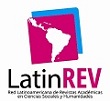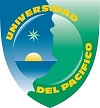Valuation of ecosystem services and some experiences in Colombia Western
DOI:
https://doi.org/10.47366/sabia.v5n1a12Keywords:
Valuation of ecosystem services, Total economic value, Techniques for estimating value, Use values, Non - use values.Abstract
Many authors agree that there is no standardized definition of the term “ecosystem services”, which makes it difficult to determine the parameters to be evaluated when it is required to make the valuation of these, also makes the interpretation of the results complex. The United Nations in the Millennium Ecosystem Assessment (MEA) classified ecosystem services into four categories: (i) provisioning services, (ii) regulation services, (iii) support services, and (iv) cultural services. Ecosystem services can be classified into use values and non-use values, the sum of use values and non-use values results in the considered total economic value (VET), which, when expressed in monetary terms, transforms it into a Useful tool for those responsible for developing environmental policies. In order to calculate the VET there are several methods: a) methods of direct market valuation, b) methods of revealed preference and c) methods of declared preference. The experiences with SE valuation schemes implemented in some parts of southwestern Colombia show that not all can be considered as SE payment schemes, although they do have some of the characteristic elements of these methods.
References
Barbier, E. B.; Baumgärtner, K.; Chopra, C.; Costello, A.; Duraiappah, R.; Hassan, A.; Kinzig, M.; Lehman, U.; Pascual, S.; Polasky, C. & Perrings. (2009). The Valuation of Ecosystem Services. Chapter 18. In: Naeem S., D. Bunker, A. Hector, M. Loreau and C. Perrings (eds.), Biodiversity, Ecosystem Functioning, and Human Wellbeing: An Ecological and Economic Perspective. Oxford University Press, Oxford, UK, pp. 248–262.
Bateman, I. J.; Carson, R. T.; Day, B.; Hanemann, M.; Hanley, N.; Hett, T.; Jones-Lee, M.; Loomes, G.; Mourato, S.; Özdemiroglu, E.; Pearce, D. W.; Sugden, R. & Swanson, J. (2002). Economic Valuation with Stated Preference Techniques: A Manual. Edward Elgar, Cheltenham.
Blanco, J. T.; Wunder, S. y Navarrete, F. (2008). La experiencia colombiana en esquemas de pagos por servicios ambientales. RECURSOS NATURALES EN COLOMBIA, 109.
Boyd, J. y Banzhaf, S. (2006). What are ecosystem services? The need for standardized environmental accounting units. Discussion Paper 06-02. Resources for the Future, Washington, DC.
Carriazo, F. y Ibáñez, M. (2003). Valoración de los beneficios económicos provistos por el Sistema de Parques Nacionales Naturales: una aplicación del análisis de transferencia de beneficios. Documento CEDE. Universidad de los Andes. Bogotá (p. 44).
Chase, L. C.; D. R.; Lee, W. D.; Schulze, & Anderson, D. J. (1998). “Ecotourism Demand and Differential Pricing of National Park Access in Costa Rica. Land Economics 74: 466–82.
Chee, Y. E. (2004). An ecological perspective on the valuation of ecosystem services. Biological conservation 120: 459–565.
CIFOR. (2006). Pago por servicios ambientales. Disponible en: http://www.cifor.org/pes/_ref/sp/sobre/ecosystem_services.htm. Recuperado 12/02/2016.
Costanza, R., R. d‟Arge, R. de Groot, S. Farber, M. Grasso, B. Hannon, K. Limburg, S. Naeem, R.V. O‟Neill, J. Paruelo, R. G. Raskin, P. Sutoon & M. van den Belt. (1997). The Value of the World‟s Ecosystem Services and Natural Capital. Nature 387: 253–260.
Daily, G; Matson, P. y Vitousek, P. (1997). Ecosystemas services supplied by soil. En Daily, G. Nature’s Services. Societal dependence on natural ecosystems. Washington D.C, US, Island Press. (p.p.113–132).
De Groot, R.; Matthew, W. y Roelof, B, (2002), A typology for the classification, description and valuation of ecosystem functions, goods and services, Ecological Economics 41: 393-408.
Ellis, G. M. y Fisher, A. C. (1987). Valuing environment as input. Journal of Environmental Management, 25: 149–156
European Commission (2008): Guide to Cost Benefit Analysis of Investment Projects. Structural Funds, Cohesion Fund and Instrument for Pre-Accession. Brussels.
Fisher, B.; Turner, R. K. y Morling, P. (2009): Defining and classifying ecosystem services for decision making. Ecological Economics. 68 (3), 643-653.
Freeman, A. A. (1993). The Measurement of Environmental and Resource Values. Resources for the Future Press, Baltimore.
Garrod, G. y Willis, K.G. (1999). Economic Valuation of the environment. Edward Elgar, Cheltenham.
Hanley, N.; Wright, R. E. y Adamowicz, V. (1998). Using Choice Experiments to Value the Environment. Environmental and Resource Economics 11(3): 413–428.
Kolstad, C. D. (2000). Environmental Economics. Oxford University Press, New York, Oxford. MEA Millennium Ecosystem Assessment. 2005. Ecosystems and Human Well-being: Biodiversity Synthesis. WorldResourcesInstitute, Washington, DC.
Lozano Torres, Y. (2007). Los sumideros de carbono: Un análisis de la potencialidad económica en un bosque de manglar del Pacífico colombiano. Revista de Ingeniería de los Recursos Naturales, 6: 82-92.
Mäler, K.; Gren, I. y Folke, C. (1994). Multiple use of environmental resources: a household production function approach to valuing natural capital. In: Jansson, A., Hammar, M, Folke, C., Costanza, R. (Eds.), Investing in natural capital. Island Press, Washington D.C., (p.p. 234–249).
Mancipe, Á. M. S. (2015). Diseño de un esquema de compensación por servicios ambientales para la cuenca del río Meléndez en el Municipio de Santiago de Cali, Colombia. Revista Colombiana de Investigaciones Agroindustriales,2(1), 25-40.
Naidoo, R. (2008). The Role of Economic Valuation in the Conservation of Tropical Nature. Economics and Conservation in the Tropics: A Strategic Dialogue. San Francisco, Conservation Strategy Fund, Resources for the Future, and the Gordon and Betty Moore Foundation: 6.
Paífico, D. y Von Neuman, J. (2012). Valoración integral de los bosques secos del Dagua, Valle del Cauca.
Pascual U.; Muradian R.; Brander L.; Gómez-Baggetun E.; Martín-López B.; Verman M.; Armsworth P.; Christie M.; Cornelissen H.; Eppink F., et al. (2010). The economics of valuing ecosystem services and biodiversity P. Kumar (Ed.), The Economics of Ecosystems and Biodiversity (TEEB) Ecological and Economic Foundations, Earthscan, pp. 183–256.
Pattanayak, S. K. y Kramer, R. A. (2001). Worth of watersheds: a producer surplus approach for valuing drought mitigation in Eastern Indonesia. Environment and Development Economics 6(01): 123–146.
Pearce, D. W. (1993). Economic values and the Natural World. Earthscan, London.
Philip, L. J. y MacMillan, D. C. (2005). Exploring Values, Context and Perceptions in Contingent Valuation Studies: The CV Market Stall Technique and Willingness to Pasy for Wildlife Conservation. Journal of Environment Plannning and Management 48(2):257–274.
Pupo-García, Luis Carlos. (2015). Valoración económica de los bienes y servicios ecosistémicos del golfo de Tribugá – Colombia. Universidad de Cartagena, Vol. 23: 39-54.
Rezk, E. (2000). Jornadas Nacionales e Interamericanas de Finanzas Públicas (33º : 2000 : Córdoba).Universidad Nacional de Córdoba. Facultad de Ciencias Económicas.
Spash, C. (2008). Deliberative Monetary Valuation and the Evidence for a New Value Theory. Land Economics 83(3): 469–488.
Tamayo E. (2014). Importancia de la valoración de servicios ecosistémicos y biodiversidad para la toma de decisiones Apuntes desde la ingeniería. Revista Ciencias Ambientales y Sostenibilidad CAS. Vo.1, No.1, 16-28
Downloads
Published
How to Cite
Issue
Section
License
Copyright (c) 2019 Sabia Scientific Journal

This work is licensed under a Creative Commons Attribution-NonCommercial-ShareAlike 4.0 International License.
















